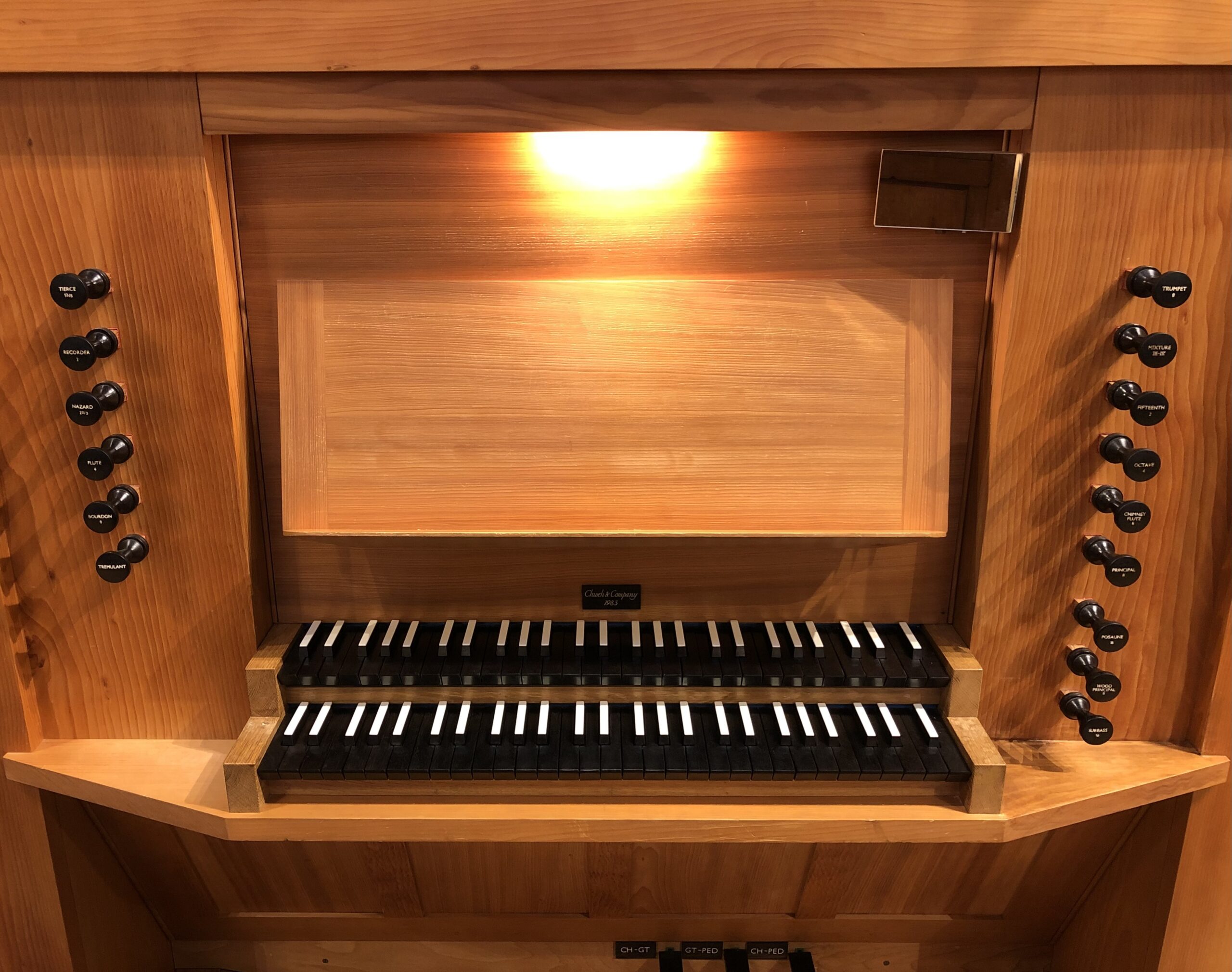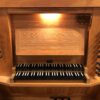From leaving school in 1972 until the closure of the firm in 1987 I worked for Church & Company organ builders based in Stamfordham, Northumberland. The workshops were located in a range of farm buildings at Nesbit Hill Head, and Nigel Church lived on site in the farmhouse.
My earliest experience was gained on the Northumberland tuning round with Wilf Loynes, and during the many cleanings we undertook at that time. The first new organ I worked on was the house organ built for the Rev. David and Angela Parkes which was installed in a bedroom in Christchurch Vicarage, Gateshead. My job was racking in the pipework.
The first organs were built in the main barn. Later, during the miners’ strike and the ‘three day week’ in 1974, I was involved in converting the cow shed into a machine shop and the other outbuildings into smaller workshops with storage space. I even lived in one of the outbuildings for a short time when I left home. This had previously been an office, and later became the drawing office.
The smallest workshop became mine around 1978, and from then on the smallest organs were built there. After John Lightbown left to set up his own company in Tynemouth I became responsible for all the drawing work, including casework, action, and laying out of soundboards. All of this was done with pencil and paper, and Rotring pens, and on old fashioned drawing boards. We never did enter the computer age with ‘computer aided design’.
I was involved in the installation of many of our instruments, although not all of them, and I had the opportunity to fly out to the USA in 1980 to visit Sacred Heart Church in Muskogee, Oklahoma, to check the measurements for the instrument we were to build there. The moisture meter I had in my case, to check the moisture content of woodwork in the church, caused quite a stir in Dallas Forth Worth airport. It was the first and only time I have been held at gun point while I tried to explain its function.
The team at Church & Company became streamlined into different departments in the latter years and by 1987 numbered six. Graeme Sharp, David Brown, and John Jewitt were general organ builders with the added responsibility of making wood pipes. Fred Ord and Nicolas Purvis were primarily cabinet makers and built casework. I was the draughtsman and builder of small organs, and of course Nigel Church had oversight of the whole team as well as voicing wood pipes and pedal reeds of his own design.
Four other organ builders passed through the workshops: John Lightbown, who had trained at Blackett & Howden before moving to work for Hill, Norman & Beard, Neil Richerby, who left to train abroad before setting up his own workshop in Scotland, Peter Whitfield, from Harrison & Harrison, who was tragically killed in a motorway accident, and Joseph Slater, who had previously worked for Ainscough in Preston.
Of the seventy plus instruments Church & Company built over a fifteen year period, all had mechanical action, all were fully encased (with the exception of Ponteland URC), and all but four were installed in homes, churches, schools, and concerts halls in the UK. The other four were exported to the USA. At the time of writing all but five are still extant, although some are only played occasionally, and some have been relocated: one to Northern Ireland and another to Spain.
The NPOR is not always entirely reliable where specifications are concerned. Therefore, wherever possible, I have noted the specifications through direct observation at the console, and where there is doubt, I have noted this in the comments. Some of the photographs are old, and for some organs yet to be uploaded I have no photographs. Therefore offers of new photographs will always be welcome.


